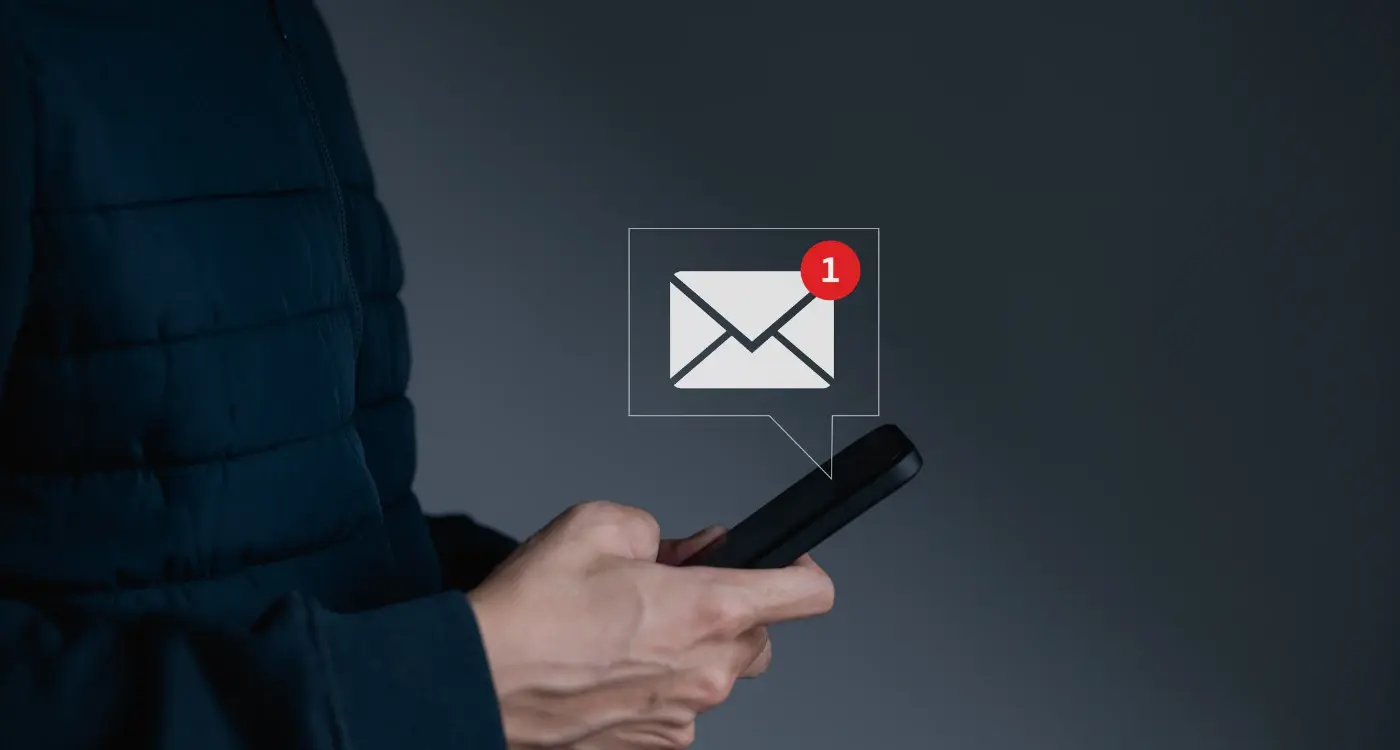How Do Subscription Apps Actually Make Money?
Mobile users spend over 7 hours per day on their devices—that's nearly half of their waking hours glued to a screen. With that much engagement, it's no wonder subscription-based mobile apps have become one of the most profitable business models in the digital space. But here's what most people don't realise: the mechanics behind how these apps actually turn those hours into pounds are far more complex than simply charging users a monthly fee.
I've spent years working with businesses trying to crack the code of recurring revenue through mobile app development, and the truth is, there's no magic formula. Some apps make millions while others barely cover their server costs, even with thousands of subscribers. The difference isn't just about having a great product—it's about understanding the intricate web of monetisation strategies that successful subscription apps use to build sustainable businesses.
The most successful subscription apps don't just sell access to features; they sell solutions to problems that users face repeatedly
Whether you're a startup founder exploring revenue models or a business owner looking to understand why your competitors are thriving with subscriptions, this guide will break down exactly how subscription apps generate money. We'll explore everything from freemium strategies to pricing psychology, user retention tactics to the common pitfalls that kill profitability. By the end, you'll have a clear understanding of what separates the subscription apps that struggle from those that build empires—and more importantly, how to apply these insights to your own mobile app venture.
What Are Subscription Apps and How Do They Work
Subscription apps are mobile applications that charge users a recurring fee to access their content or services. Think Netflix, Spotify, or Adobe Creative Cloud—instead of paying once upfront, users pay monthly or yearly to keep using the app. The model has become incredibly popular because it creates predictable income for developers whilst giving users access to premium features without a large initial cost.
The basic principle is straightforward: you download the app (usually for free), try it out, then decide whether to pay for ongoing access to the full version. Some apps let you use basic features without paying, whilst others give you a free trial period before the subscription kicks in. Once you subscribe, you get continuous access to all the app's features—as long as you keep paying, of course.
How the Payment System Works
Most subscription apps operate through app stores like Google Play or Apple's App Store, which handle all the payment processing. Users link their payment method once, and the subscription renews automatically until they cancel. This automated system makes it convenient for users but also means many people forget they're paying for apps they no longer use!
The subscription fees typically fall into these categories:
- Monthly subscriptions (usually £2-15 per month)
- Annual subscriptions (often offering 20-30% savings)
- Weekly subscriptions (common for fitness or meditation apps)
- Lifetime subscriptions (one large payment for permanent access)
What makes this model particularly attractive for app developers is the recurring revenue stream. Instead of earning money just once when someone buys the app, they earn continuously from each subscriber—making it much easier to predict income and fund ongoing development.
The Main Ways Subscription Apps Generate Revenue
Right, let's get straight to the point—subscription apps have several clever ways to turn users into reliable income streams. The beauty of this mobile app business model lies in its ability to create steady recurring revenue, which is exactly what investors and business owners love to see.
The most obvious way is through monthly or yearly subscription fees. Users pay a fixed amount to access premium features, content, or services. Think streaming platforms, fitness apps, or productivity tools. This creates predictable income that you can count on month after month.
Multiple Revenue Streams Working Together
Smart subscription apps don't rely on just one income source. They often combine several monetisation strategies to maximise their earnings:
- Basic subscription tiers with limited features
- Premium tiers with advanced functionality
- In-app purchases for extra content or credits
- Advertising revenue from free tier users
- Corporate or enterprise subscriptions at higher price points
Some apps also generate revenue through partnerships and affiliate marketing. They might recommend products or services to users and earn a commission on any sales. Data insights—anonymised and aggregated, of course—can also be valuable to market research companies.
The Power of Scale
What makes subscription apps particularly profitable is their scalability. Once you've built the mobile app, adding new users doesn't cost much extra. Your main ongoing expenses are server costs, customer support, and regular updates. The more subscribers you gain, the better your profit margins become.
Focus on creating multiple value propositions within your app. Users who see different types of value are more likely to maintain their subscriptions and upgrade to higher tiers.
The key is finding the right balance between free features that attract users and premium features that convince them to pay. Get this wrong and you'll struggle to convert free users into paying subscribers.
Freemium Models and Their Profit Strategies
Freemium apps are everywhere these days—and for good reason. They give users a taste of what's on offer without asking for money upfront. The basic version is completely free, but if you want the really good stuff, you'll need to pay for premium features. It's a bit like offering someone a free sample at the supermarket; once they're hooked, they're more likely to buy the full product.
The magic happens in how these apps convert free users into paying customers. Most freemium apps follow a simple rule: give away enough value to keep people engaged, but hold back the features that power users really want. Music streaming apps might limit how many songs you can skip per hour, whilst productivity apps could restrict how many projects you can create. The free version needs to be genuinely useful—otherwise people will just delete it and move on.
Common Freemium Conversion Tactics
- Time-based limitations (like daily usage caps)
- Feature restrictions (removing ads or unlocking advanced tools)
- Storage limits (offering more space for premium users)
- Priority support and faster loading times
- Exclusive content or early access to new features
The tricky part is getting the balance right. Too restrictive and users get frustrated; too generous and they never feel the need to upgrade. Most successful freemium apps convert between 2-5% of their free users to paid subscriptions. That might sound low, but when you have millions of users, those numbers add up quickly. The key is building a large base of free users first—they're not just potential customers, they're also your marketing team, sharing and recommending your app to others.
Making Freemium Work Long-Term
The best freemium strategies focus on creating genuine value for free users whilst making premium features feel like natural next steps rather than desperate cash grabs. Apps that succeed with this model typically offer something that gets better the more you use it—whether that's personalised recommendations, saved preferences, or accumulated data that becomes more valuable over time.
Premium Subscription Tiers and Pricing Psychology
Getting your subscription pricing right can make or break your mobile app's recurring revenue potential. I've worked with countless clients over the years who've struggled with this—and honestly, it's one of those things that looks simple on paper but gets quite complex in practice.
Most successful subscription apps use what we call tiered pricing. Think basic, premium, and pro levels. This isn't just about offering more features for more money; it's about understanding how people make decisions. When you present three options, most users will naturally gravitate towards the middle tier. It feels safe—not too cheap that it seems rubbish, not too expensive that it breaks the bank.
The Goldilocks Effect in Action
Your basic tier should solve the core problem your app addresses, but leave users wanting more. The premium tier—your sweet spot—should include the features most people actually need. The top tier? That's for power users and businesses who'll pay extra for advanced functionality.
Pricing isn't just about covering costs and making profit—it's about communicating value to your users
Psychology Tricks That Actually Work
Annual subscriptions almost always beat monthly ones for maximising recurring revenue. Users pay upfront, you get better cash flow, and they're less likely to cancel. Offering a discount for annual payments—typically 15-20% off the monthly rate—makes the decision easier.
Free trials work brilliantly for mobile app monetisation, but keep them short. Seven days creates urgency; thirty days lets people forget they even signed up. The goal is getting users invested in your app quickly, not giving away free value indefinitely.
User Retention and Lifetime Value in Subscription Apps
Here's the thing about subscription apps—getting people to download them is just the beginning. The real money comes from keeping users around for months or years, not days. This is where two big ideas come into play: user retention and lifetime value.
User retention is simply how many people stick with your app over time. If 100 people download your app today, how many will still be using it next month? Next year? The numbers can be pretty sobering. Most apps lose around 80% of their users within the first month. That's a lot of people who tried your app once and never came back.
Why Keeping Users Matters More Than Getting Them
This is where lifetime value becomes really interesting. Lifetime value (or LTV as we call it) is the total amount of money one user will spend on your app throughout their entire relationship with you. Someone might pay £5 per month for two years—that's £120 in lifetime value from just one person.
The maths here is pretty straightforward but the execution isn't. If it costs you £10 to acquire a new user through marketing, but they only stay subscribed for one month at £5, you're losing money. But if that same user stays for six months, you're making £20 profit. That's why successful subscription apps obsess over keeping people engaged and happy.
The Retention Challenge
Most subscription apps focus heavily on the first few days after someone downloads their app. This is when people decide whether your app is worth keeping or not. Apps use push notifications, email sequences, and in-app tutorials to help new users understand the value they're getting. The goal is turning that free trial or first month into a long-term relationship.
Common Challenges That Affect Subscription App Profits
Building a profitable subscription mobile app isn't just about getting people to download it—that's actually the easy part. The real challenge starts once someone has signed up for your service. I've worked with countless app developers over the years, and I can tell you that the same problems crop up again and again when it comes to maintaining healthy recurring revenue.
The Big Four Profit Killers
Let me be straight with you: most subscription apps fail because of four main issues. First up is churn rate—people cancelling their subscriptions faster than you can replace them. It's like trying to fill a bucket with holes in the bottom. Then there's the acquisition cost problem; if it costs you £20 to get a customer who only pays £5 per month, you're in trouble from day one.
The third killer is poor onboarding. Users download your app, feel confused or overwhelmed, and delete it within days. Finally, there's the pricing trap—setting prices too low to compete, then realising you can't cover your costs or invest in improvements.
Track your churn rate weekly, not monthly. Weekly monitoring lets you spot problems before they become disasters and gives you more opportunities to test solutions.
Why Users Actually Cancel
| Reason for Cancelling | Percentage of Users |
|---|---|
| Not using the app enough | 45% |
| Too expensive | 28% |
| Found a better alternative | 15% |
| Technical problems | 12% |
The good news? Most of these challenges can be solved with the right approach to user engagement and smart monetisation strategies. The key is identifying which problems are affecting your app specifically, then tackling them one by one. Some apps even face scaling challenges when they become really popular, which creates its own set of revenue-affecting problems.
Conclusion
After working with subscription-based apps for years, I can tell you that the money-making side isn't as mysterious as it might seem at first glance. These apps generate revenue through a mix of subscription fees, freemium upgrades, premium tiers, and sometimes advertising—but the real magic happens when they keep users engaged month after month.
The most successful subscription apps I've worked on all share one thing in common: they understand their users inside and out. They know exactly what value they're providing and they price it fairly. Whether it's a simple monthly subscription or a complex freemium model with multiple tiers, the apps that make serious money are the ones that solve real problems for people.
User retention is where the big money lives though. An app might charge £4.99 per month, but if someone stays subscribed for two years, that's nearly £120 from a single user. This is why subscription apps focus so heavily on keeping people happy and engaged rather than just acquiring new downloads.
The challenges are real—from getting people to actually pay for subscriptions to dealing with refunds and managing churn rates. But when done right, subscription apps can generate steady, predictable revenue that grows over time. That's why so many developers are choosing this model; it creates a sustainable business rather than relying on one-off purchases or unpredictable advertising income.
Share this
Subscribe To Our Learning Centre
You May Also Like
These Related Guides

How Do You Measure App Success Beyond Downloads?

How Do I Use Email Marketing To Reduce App Churn?



